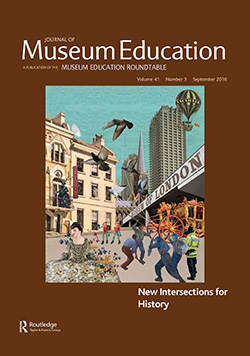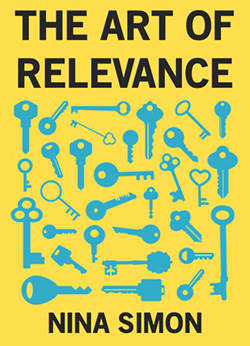On Relevance

There it is again. That phrase.
A small group of local teachers and media specialists are gathered at the Beckley Furnace industrial monument in Northwest CT, where we are discussing ways to engage area students in learning at the heritage site. As the conversation progresses one teacher offers:
“We need to find a way to make this history relevant to the kids.”
Relevance is a hot topic these days. In the museum field. In history classrooms. In the latest issue of the Journal of Museum Education (JME). The issue, guest edited by MER Board member Mariruth Leftwich of the Senator John Heinz History Center, presents five case studies exploring ways history organizations are expanding the notion of who they are for and what they offer their visitors. They are actively seeking relevance by stretching themselves beyond commonly held expectations of what history museums do.

Together, the teacher’s lament, the case studies in the JME, and the larger conversation about relevance in our field have gotten me stirred up. I’ve been a history museum nerd from an early age. I love this history stuff. It can be incredibly personal and powerful. It can make change. At least I think it can. I want other people, ALL people, to believe this too.
But I have a lot of questions about how that can happen. Mostly questions. Not a lot of answers.
What exactly does it mean to be relevant?
Why do museums suddenly think it is important that they be relevant?
Relevant to whom?
Nina Simon also has questions about relevance which she thoughtfully explores in her new book The Art of Relevance. In reading the book it’s very clear that relevance is an art not a science. There is no formula, no step-by-step process. It is about personal meaning-making and an institutional commitment to hard work, a willingness to take risks and make mistakes, and more hard work. And in most instances the answer to the questions above is “it depends.”
Beyond defining relevance itself, the stickiest word in the teacher’s lament for me was not relevance, but MAKE.

Can you make something relevant to someone else?
I can’t make my kid put on her shoes in the morning. Or eat faster, or brush her teeth, or comb her hair. Isn’t it a bit presumptuous to suggest that we can make the stories and objects in our museums relevant to people who don’t/won’t/can’t visit? Or to those who come but don’t find the experience meaningful enough to return? If we declare that history is relevant, does that make it so?
If only it were that simple.
The language we use is important. And the word “make” gets under my skin. It suggests that relevance is something we can do to other people. As opposed to something we do with our actual and desired audiences. We need to be more mindful of how we communicate our desire to be relevant. We may be turning away the very people we want to collaborate with because of our careless choice of words.
I had the opportunity to share some of my thoughts and questions about relevance with Nina Simon during the first MuseumHive meet-up on October 26, 2016. Stuck at home, I participated via Twitter and wrote:
https://twitter.com/seededucation/status/791416172243628032
I like the word “strive;” it signals a willingness to invest in the hard work, resources, and humility necessary to abandon our traditional role as “authority” and instead simply set the stage for others to find their own meaning, assign their own value, find their own relevance in our objects and stories.
Where does this leave us? Relevance is a moving target. But that doesn’t mean we shouldn’t keep working to hit the bullseye. And while I can’t provide any definitive answers, I can leave you with links to some resources that I hope will get you stirred up about relevance too.
Resources
Journal of Museum Education, vol. 41, no. 3, New Intersections for History
Storify of Thursday, October 27, 2016 #MuseumEdChat focusing on history and relevance
Nina Simon’s The Art of Relevance
Video of MuseumHive meet-up with Nina Simon on Wednesday, October 26, 2016.
_____________________________________________________________________________
Elisabeth Nevins is the principal of Seed Education Consulting in Boston, working with museums and historic sites to create engaging and relevant learning experiences with their visitors. She serves as the Publications Strategist for Museum Education Roundtable and as a reviewer and cover photo editor for the Journal of Museum Education. She tweets as @seededucation.
Opening photo credit: “Target” by cesar bojorquez, via Flickr

